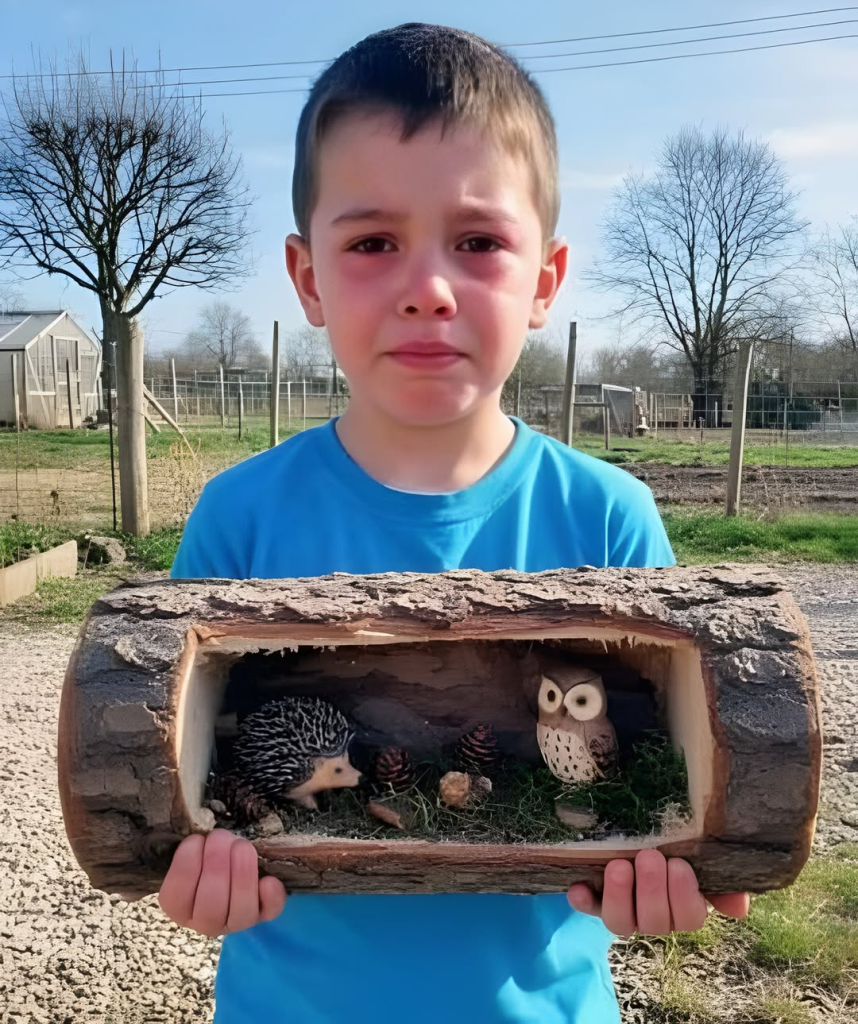My Heart Broke a Little — A Week Spent With My Son Creating More Than “Just Crafts”
I’ll never forget that week. What started as a mundane project—a little woodland scene made from simple materials—became so much more than that. It turned into a journey I didn’t see coming. By the end, my heart cracked in ways I hadn’t expected.
The First Day: An Idea, A Spark
It all started innocently. My son came home from school one afternoon, eyes bright, clutching a handful of glitters, moss, twigs, and tiny plastic animals. He told me, “Dad, let’s build a woodland world — a forest that tells a story.” I smiled, agreed, and we set up at the kitchen table.
At first, it was just tearing moss sheets, trimming bits of wood, gluing things down, placing miniature trees and rocks. We chatted about school, his friends, his day. It was casual. It felt like a fun way to spend the late afternoon.
He paused, stared at the moss, and whispered to me, “Dad, it has to look real.” He held the twig in his hand, turning it this way and that, contemplating. I shrugged and said, “Real is in the eye of the beholder.” He nodded, but I could tell he wasn’t satisfied.
Day Two & Three: Precision, Perseverance, and Pushing Past Tiredness
The next days, we dove deeper. We created little hills, paths, hidden nooks. He insisted on shading, texture, layering. He would tap the moss, press little stones, probe where tiny ferns should lean. He became exacting. Sometimes I gently nudged, “It’s okay if it’s not perfect.” He looked at me, eyes resolute, “No, Dad. It can be better.”

We worked after dinner. We worked when he could barely keep his eyes open. He dragged his little frame up to the table, laying there and still holding a bit of moss in his tiny fingers, asleep—but refusing to let go until the scene felt “just right.” He would mumble in his sleep about where an owl should stand or how much shading that patch of forest needed.
Some nights, I’d catch myself watching—not interrupting—wondering how deeply a seven-year-old could care about the nuance of a crafted forest floor.
Midweek Doubts and Frustrations
By midweek, fatigue crept in. I saw him hesitate, put down glue, frown at a misplaced twig. He let out a long sigh: “Dad, why is this so hard?” I looked around at the mess of bits, glue stains, shredded moss, and half-finished parts. I told him what every parent tells a frustrated child: “We can step back, take a break, do it tomorrow.” He shook his head stubbornly: “No. I want to finish it the way I see it in my mind.”
That night, I sensed a shift—not just in the project, but in how he was living inside this little creation. His imagination wasn’t just playing; it was demanding authenticity. He wanted his forest to feel alive. He wanted every rock, every shadow, every creature to inhabit the space just as he envisioned.
I felt pressure too—from my own hope to support him, but also from wanting to finish, to help, to not mess it up. And watching him push through frustration, I realized how fragile that determination is in a child.
The Turning Point: Discovery & Revelation
On the fourth day, he paused suddenly, staring at a blank patch. He plucked a stem of tiny fern, tried to balance it, frowned. He whispered, almost to himself, “If I can’t make it feel right, people will know it’s fake.” The weight of that phrase hit me hard. He was so young—and yet he already believed that people see the imperfections first.
At that moment, I boxed up my adult sensibilities. I knelt next to him, placed my hand gently over his shoulder, and said, “You know, what people see is the heart behind it, not just the perfection.” He looked up, teary eyes, nodded, and for a moment, we both sat silent, letting the forest in front of us breathe.
Then he returned, placing that fern, adjusting shadows, pressing pieces again. I watched him care so fiercely about something so small — and felt how big it all really was to him.
The Final Days: Refinement, Closure, and Letting Go
By the end of the week, the woodland scene was complete—or at least, as complete as a living imagination allows. We’d sculpted small hills, hidden caves, a tiny owl perched on a branch, peering into the moss. We’d shaded undergrowth, placed stones just so, cajoled fallen leaves into natural arrangements.
He stepped back, eyes wide, took a deep breath, and said, “It’s done.” He didn’t say it with relief but softly, as though he was setting something free.
I sat across from him, took in every detail, and felt my heart break a little. Because I saw what he had poured into it—the hours, the frustration, the silent struggle between perfectionism and surrender. I saw his tender insistence. I saw his belief.
I also saw that he had grown that week. I saw his persistence deepen. I saw in his fingers, still dusty and stained, a little more confidence. And I saw myself changed by witnessing his process.